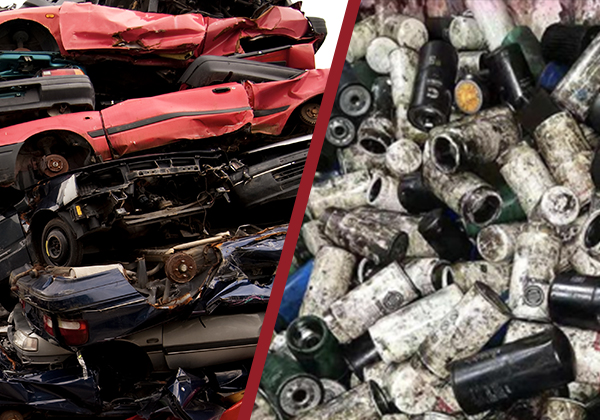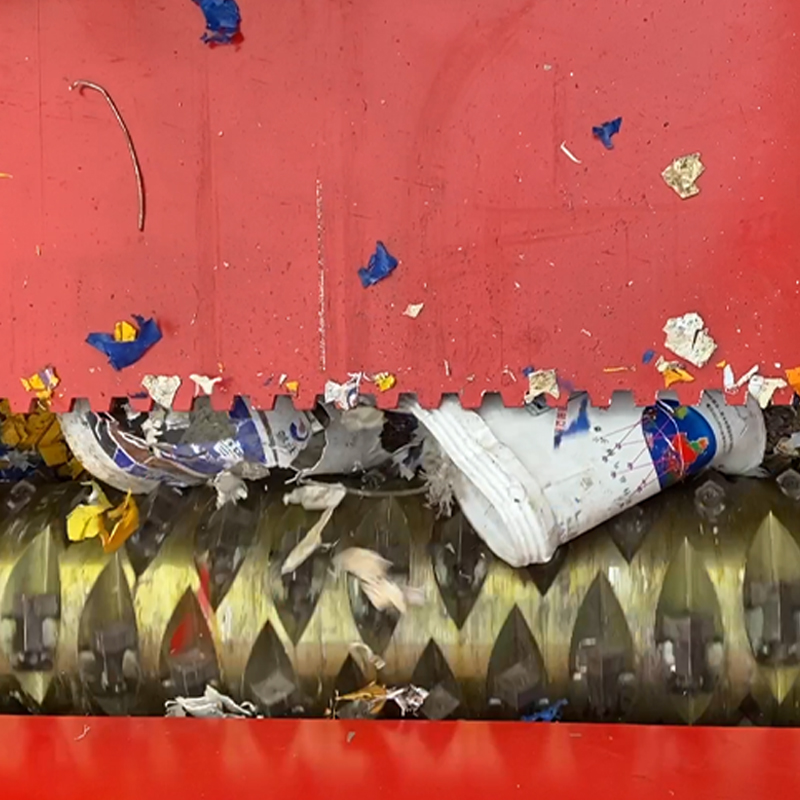+1(909)-996-3687
Metal Shredder
- All
- Product Name
- Product Keyword
- Product Model
- Product Summary
- Product Description
- Multi Field Search
Views: 0 Author: Site Editor Publish Time: 2025-06-25 Origin: Site









Heavy metal shredding machines are critical in metal recycling and manufacturing. Without them, processing large amounts of scrap metal would be nearly impossible. In this article, we'll discuss essential tips on selecting, operating, and maintaining these machines. You'll learn how to optimize their efficiency and get the most out of your equipment.
When choosing a shredding machine, the first thing to consider is the type of materials you'll be processing. Will it be scrap metal, automotive parts, or even e-waste? Different materials come with different demands.
● Scrap Metal: For dense and tough metals like steel or iron, you'll need a shredder with high torque and durable blades capable of handling heavy loads.
● Automotive Parts: Shredding automotive parts requires machines with adjustable configurations, allowing you to manage various sizes and shapes of materials.
● E-Waste (Electronics): Since electronics are more delicate, a shredder with a finer cutting mechanism will help avoid damaging the components.
Understanding your material types will help you choose the machine best suited for your job. Matching the right shredder to your materials ensures you get the best performance and longevity from your equipment.
Blades play a crucial role in the shredding process, and choosing the right type is essential. Consider the following:
● For Softer Metals (e.g., Aluminum): Use blades with a finer, sharper cut to reduce material to smaller pieces without much force.
● For Harder Metals (e.g., Steel or Iron): Choose shredders with heavy-duty, thicker blades that can withstand more wear and tear.
Additionally, some shredders allow for adjustable blade configurations. If you're working with mixed materials, a configurable shredder can give you the flexibility needed to adapt to different shredding requirements. Regularly inspect the blades to maintain their sharpness and ensure smooth operation.
Capacity and throughput are vital factors when selecting a shredder for your needs. Here's how to evaluate them:
● Shredding Capacity: Estimate how much material you need to process daily or weekly. If your needs are high-volume, you'll require a shredder with a larger capacity.
● Throughput Speed: Throughput refers to how quickly a shredder can process material. A high throughput speed is beneficial for large-scale operations, but it should not come at the cost of shredding quality. For example, if you are working with different metal types, too fast a speed may lead to poor shredding results.
It's important to balance these factors. Matching the shredder's capacity with your daily volume ensures you're getting the most out of the machine, while also avoiding unnecessary stress on the equipment.
Choosing the right shredder is about understanding your specific requirements and matching those with the shredder's capabilities. When you get the right fit, it ensures both efficiency and longevity in your operations.

Before starting your heavy metal shredder, it's essential to prepare it for optimal performance. Here's how:
● Preheating the Machine: Always allow the machine to warm up for a few minutes before beginning operation. This ensures the motor reaches the right operating temperature and prevents unnecessary wear.
● Setting Initial Parameters: Adjust the machine’s speed and pressure settings based on the type of material you're processing. Softer metals require less pressure, while harder materials like steel may need higher settings to handle the load.
Proper preheating and setup minimize stress on the shredder and ensure smoother operation.
Running the shredder smoothly requires attention to detail. Avoid these common mistakes:
● Preventing Overloading: Never overload the machine. Feeding too much material at once can cause jams and damage the blades. Always feed material gradually to prevent strain on the motor.
● Ensuring a Uniform Feed: Feed the material evenly to ensure consistent shredding. Irregular feeds lead to inefficient shredding and may damage parts of the machine.
● Managing Material Hardness: If you're processing mixed materials, adjust the settings accordingly. Harder metals need more force, so ensure the shredder can handle the material's hardness without damaging the blades.
Being cautious about these factors will help avoid unnecessary breakdowns and improve the shredder's longevity.
During operation, small adjustments can make a big difference in performance:
● Adjusting Cutting Speeds: Modifying the cutting speed based on the material can help manage time and efficiency. For tougher materials, slower speeds may provide better results, while softer metals can be shredded faster.
● Automated Feeding Systems: If your shredder is equipped with an automated feeding system, use it to reduce manual labor. These systems ensure a consistent feed, minimize downtime, and improve overall shredding efficiency.
Optimizing the shredder's settings and using automation can significantly boost productivity and reduce the need for manual intervention.
Regular maintenance ensures your shredder stays in top condition. Here's how to keep it running smoothly:
● Inspecting and Replacing Blades: Check the blades frequently for wear. Replace them when they begin to dull or show signs of damage. Dull blades slow down the shredding process and put extra strain on the motor.
● Cleaning and Lubricating Parts: Regularly clean the shredder to remove debris that could hinder performance. Lubricate moving parts to prevent friction, reducing wear and tear on key components.
A routine maintenance schedule helps you catch issues early before they become major problems.
Preventing common failures keeps your shredder running smoothly. Pay attention to these key areas:
● Preventing Overheating and Overloading: Overheating can damage internal components. Make sure the machine isn't overloaded, and ensure proper airflow to avoid overheating. If the shredder is working too hard, it may overheat and break down.
● Maintaining Electrical and Motor Systems: Keep the electrical and motor systems well-maintained. Regularly check for loose connections or signs of wear on wires and motors. Proper maintenance ensures consistent performance and helps avoid electrical failures.
By managing these areas, you can keep your shredder running at peak efficiency without unnecessary downtime.
Extending the lifespan of your shredder requires consistent care. Here's how to do it:
● Maintenance Schedules: Create a regular schedule for checking and maintaining your shredder. Perform visual inspections, clean parts, and check motor systems. Following a routine helps ensure everything is in good working order.
● Preventing Metal Debris Buildup: Metal debris can clog parts and damage your shredder. Regularly clear out any leftover materials and metal fragments to prevent buildup. Blockages can disrupt the shredding process and cause malfunctions.
Consistent maintenance will extend the life of your shredder and improve its overall performance.

Before starting your shredder, check these safety mechanisms to ensure a safe operation:
● Inspect Safety Mechanisms: Always verify that safety guards and covers are in place and functioning. They protect you from moving parts and flying debris.
● Personal Protective Equipment (PPE): Wear proper PPE such as gloves, goggles, and ear protection. The gloves protect your hands from sharp edges, goggles shield your eyes from debris, and ear protection prevents hearing damage from loud noise.
Ensuring these safety measures before operation is crucial to avoid accidents.
During operation, keep these practices in mind to maintain safety:
● Monitor Machine Performance: Regularly check the shredder's performance to avoid overloading. Overloading can cause the machine to break down or cause harm.
● Handle Machine Stops or Jams Safely: If the shredder stops unexpectedly, do not attempt to fix it immediately. Turn off the machine, wait for it to cool, and then remove any blockages safely.
Proper monitoring helps ensure smooth operation and keeps everyone safe.
In case of emergencies, it's essential to know how to act quickly:
● Use Emergency Stop Buttons Correctly: Familiarize yourself with the emergency stop button and know where it is located. Press it immediately if something goes wrong, like the shredder malfunctioning or starting to overheat.
● Troubleshoot Malfunctions Safely: If a malfunction occurs, turn off the shredder and check for obvious issues, such as loose parts or blockages. Always follow the machine's safety manual for troubleshooting steps.
Knowing the correct emergency procedures ensures you can act quickly and safely during critical situations.
To get the best results, choose the right shredder, operate it efficiently, and maintain it regularly. Prioritize safety by inspecting equipment, using protective gear, and following proper operating procedures. By implementing these tips, you'll boost productivity, extend your shredder's lifespan, and ensure your metal shredding tasks are completed effectively and safely.
ENERPAT has years of experience in designing and manufacturing Metal Shredder. If you want to know more about Metal Shredder, feel free to contact us anytime with your inguiries.
A: Blades should be replaced when they show signs of wear or become dull, typically every 3-6 months, depending on usage.
A: Many shredders are designed for specific materials. Check the machine's manual to see if it can handle non-metal items like plastics or wood.
A: If the machine slows down, makes unusual noises, or stops, it may be overloaded. Always monitor the load to avoid this.
A: Yes, many modern shredders are designed to be more energy-efficient. Look for models labeled as energy-saving or eco-friendly.